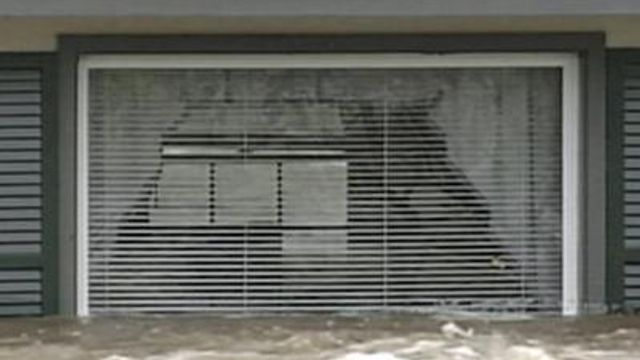Ten years later, mark of Hurricane Floyd remains
Vacant lots and empty buildings serve in some communities as a reminders of what was lost when Hurricane Floyd covered eastern North Carolina in unprecedented floodwaters in September 1999.
Posted — UpdatedTen years ago this September, Hurriane Floyd hit North Carolina. It was only a category 2 storm, but its unprecedented flooding killed dozens and brought destruction that left a lasting impact on eastern North Carolina.
"I can't honestly say that there was ever a moment where I thought ahead of time that it was going to end up as catastrophic as it ended up being," WRAL Chief Meteorologist Greg Fishel said.
On Sept. 5, 1999, Tropical Storm Dennis dumped 6 to 16 inches of rain on drought-stricken eastern North Carolina. Eleven days later, Hurricane Floyd dropped another 12 to 20 inches.
"The bottom line is that eastern North Carolina became pretty much a lake," said meteorologist Jeff Orrock, with the National Weather Service. "I didn't really matter just about where you were in a lot of these areas. I mean, you were flooded."
The Tar River flooded the entire town of Princeville.
"Next thing I know, the water was up to the top of my house, right to the pitch of my house, and everything, everything was gone," Princeville resident Eddie Hinton recalled.
Water covered a quarter of Rocky Mount, flooding thousands of homes and businesses.
"We had hundreds, maybe thousands of people who needed help. They were, frankly, scared, very terrified by what had happened," former Rocky Mount Mayor Fred Turnage said.
Communities along the Neuse River flooded, too. In Kinston, waters inundated 700 homes, dozens of businesses and one of the city's wastewater treatment plants.
"I look back today and say, 'I just can't believe that these areas in Kinston went underwater.' It's just hard to imagine," Kinston City Manager Scott Stevens said.
Floyd killed 52 people in North Carolina and caused about $6 billion in property damage and another $1 billion in agricultural losses. Environmental losses also piled up, as oils, chemicals and both human and animal waste polluted rivers.
In many communities, vacant lots and empty buildings still serve as reminders of where homes and businesses stood before Floyd hit.
"It's probably a thing you may never totally recover from," Turnage said.
Federal and state funds helped rebuild eastern North Carolina.
And the state created new flood maps. Floyd's flood waters revealed significant faults in the old ones.
"We determined that about 80 percent of the homes damaged or destroyed at the time were not accurately depicted in the flood zone," said John Dorman, director of the N.C. Flood Mapping program.
Ten years later, North Carolina has fewer homes and businesses in the flood plain and better emergency response capability. The state seems much better prepared for the next big flood, even a 500-year flood like Floyd.
"Call it a 500-year flood doesn't necessarily mean it's going be another 500 years before it happens," Fishel said.
• Credits
Copyright 2024 by Capitol Broadcasting Company. All rights reserved. This material may not be published, broadcast, rewritten or redistributed.






